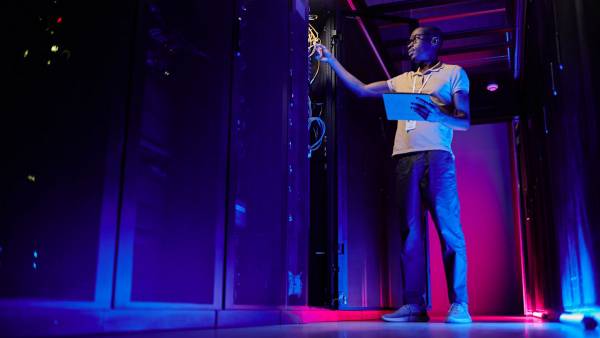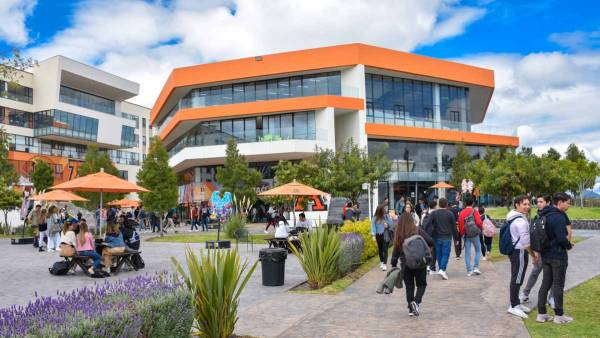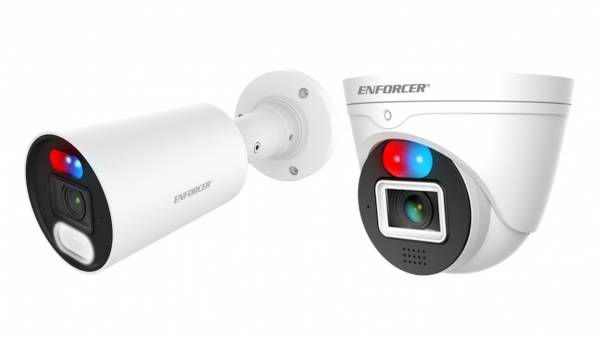 Latin America. Convergence, 5G and small cell deployments will be some of the wireless trends in the year.
Latin America. Convergence, 5G and small cell deployments will be some of the wireless trends in the year.
Readers who are familiar with the "Hype Cycle" will know that new technologies go through a process enter the market. The initial excitement leads to high expectations, which lead to general frustration before completing the difficult task of implementing these technologies massively (if at all).
For Morgan Kurk the technology, as well as the networks that the h"In the case of 5G, we can certainly observe the initial enthusiasm of all the wonders it will be able to perform. We have also gone through the stage of frustration that occurs when we realize that carrying out this is going to be difficult. However, we are now on the rebound, and we believe that 2018 will be a productive period in which we can begin to truly differentiate what is possible from all the buzz," said Rogerio Ferro, Director of Wireless Sales for South America at CommScope. "We will clash with reality when the 3GPP (3rd Generation Partnership Project) finalizes the new 'Radio non-standalone 5G' standard, enabling future developments."
2018 will be a time for pragmatism, to get into the matter of what is really possible. That is why the densification, virtualization, optimization and simplification of networks will continue to be the main objective for operators in the coming year. They are not new, but these initiatives are important for operators to make the most of their network investments and build a bridge to the next generation of technologies.
Rogerio Ferro added that, as 2018 approaches, CommScope also notices the spirit of experimentation among its customers as tests and studies gain momentum. "All these tests make it clear that 5G will bring new dynamics and opportunities to the market, however, numerous challenges still need to be overcome." According to CommScope's Director of Wireless Sales for South America, these three areas will be key in 2018:
Convergence towards new business models and use cases
"The convergence of wireless and wired networks is real. Many of our clients are reorganizing around this concept as businesses, which used to be independent, come together. Those who opted for traditional wired networks are bringing their expertise in fiber connectivity to the wireless world. Many operators are focused on bringing more and more fiber into their networks to enable C-RAN architectures and large-scale deployments of small cells that bring fiber closer to subscribers," said Rogerio Ferro.
Multiple Service Operators (MSOs) and neutral host companies with existing fiber networks are monetizing them by selling access for small cell backhaul. Some are even building their own small cell networks and leasing them to wireless carriers. Unusual alliances are forming between cable companies, wireless providers and neutral hosts. Market dynamics are constantly changing, which can generate anxiety, but also points to new opportunities.
"There is also convergence of licensed and unlicensed spectrum as new frequencies such as 3.5 GHz, one of the global 5G bands, open up," added the Director of Wireless Sales. "The Citizen Broadband Radio Service (CBRS) in the United States will serve users with licensed and unlicensed bands, and enable new use cases such as private LTE networks and single wholesale networks/wholesale open access networks (SWN/WOAN). A manufacturer could deploy a private LTE network at 3.5 GHz to wirelessly control robotics in a factory. Or a neutral host could deploy an LTE network in a stadium or mall and sell capacity to service providers. Many of these are new business and use cases that are being talked about at 3.5 GHz."
The road to 5G is paved with LTE
For the traditional cellular market, the goal of enhanced mobile broadband continues to be driven by the evolution of LTE. With Carrier Aggregation capability tested and deployed in the field, LTE is reaching very high speeds with data download and upload speeds of over 100 Mbps. In fact, "Gigabit" LTE sites are already popping up. LTE latency is typically less than 20 milliseconds in many parts of the network. In the coming years, LTE will continue to be the foundation and support network of the "network of networks" that 5G promises. Someday, 5G will become the core macro network technology, but it will likely start as a capacity enhancement for areas with higher demand and high concentrations of users, as well as driving new use cases for vertical applications.
"5G will definitely be used for the Internet of Things (IoT) and very low-latency applications," said Rogerio Ferro. "These use cases will appear first in applications such as industrial manufacturing with wirelessly coordinated robotics with ultra-low latency. The real promise of 5G is a combination of high speeds, low latency and low-power devices. Architectural changes in 5G will allow operators to choose the fronthaul options that are optimal for the best latency or performance. We'll see these changes come in stages, with specific use cases based on vertical markets. Cellular mobile communication, logistics, manufacturing and healthcare will all have their specific requirements."
The challenge of small cells
The entire industry has been talking about this challenge for a while, but small cells are still too difficult to deploy. Site acquisition is a big challenge. You're starting to see higher volume projects, but it still takes longer than everyone would like. Zoning processes that last 12 months or more are simply too long. According to CommScope's Director of Wireless Sales South America, the expectation for 2018 is a real move in global efforts to standardize and accelerate small cell deployments.
"Everyone also knows the challenges of millimeter wave bands," Ferro added. "Signal propagation decreases considerably at higher frequencies. Fixed wireless access in mmWave is a good case for using Massive MIMO (Multiple Input and Output) and active antennas. We anticipate the emergence of active antennas in 2018 for bands above 6 GHz for fixed wireless and low-mobility applications. That said, traditional antennas with multiband and beamforming capabilities remain critical to wireless networks."
This is also a site acquisition problem, more specifically a tower space acquisition problem. The towers are crowded. If operators want to add new spectrum or technology, they need to find space. Usually, this means antenna replacements that support existing frequency bands and add new ones. Any device that goes to a tower today must be fit for multiple purposes and be ready for the future.
"Of course, many other technology discussions are ongoing in the wireless world. This year we will see significant advances in defining 5G both as a standard and for real-world deployments. The initial hype cycle has been reduced, a necessary step towards practical discernment of how we will all make 5G a reality," concluded the Director of Wireless Sales for South America.

























Leave your comment